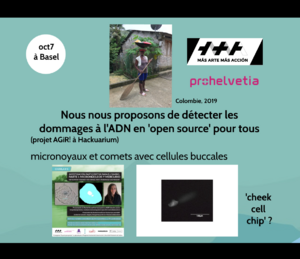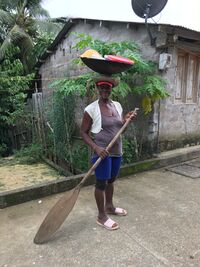Difference between revisions of "Micronuclei and Mercury"
| Line 51: | Line 51: | ||
*a [https://www.independent.co.uk/environment/river-legal-rights-colombia-environment-pacific-rainforest-atrato-river-rio-quito-a7991061.html report in the British paper, the Independent, from 2017] about the river getting human rights. | *a [https://www.independent.co.uk/environment/river-legal-rights-colombia-environment-pacific-rainforest-atrato-river-rio-quito-a7991061.html report in the British paper, the Independent, from 2017] about the river getting human rights. | ||
*higher than WHO levels in [https://www.researchgate.net/publication/320722902_Mercury_pollution_by_gold_mining_in_a_global_biodiversity_hotspot_the_Choco_biogeographic_region_Colombia fish from the Atrato]. | *higher than WHO levels in [https://www.researchgate.net/publication/320722902_Mercury_pollution_by_gold_mining_in_a_global_biodiversity_hotspot_the_Choco_biogeographic_region_Colombia fish from the Atrato]. | ||
| + | *the [https://pubmed.ncbi.nlm.nih.gov/29154117/ study from Yuber's work with mercury] measured not only in fish and sediments, but in people's hair. | ||
Revision as of 10:12, 29 November 2021
Genomic integrity is a new 'big picture' concept to aid public health efforts and basically includes all the molecular genetic details of cells! While so many things we commonly choose to do can impact genomic integrity (also potentially affecting future generations!), environmental pollution, which we can rarely choose to avoid, particularly when waterways are affected, is a key problem. If pollution by mercury, which pollutes many areas where gold mining is pursued (legally or illegally), and exposure cannot be avoided by local populations, effects on genomic integrity are predicted.
One way to measure such effects of mercury pollution in cells is by using the micronucleus assay, which Hackuarium has been making 'open-source' for anyone interested in examining their inner cheek cells to determine levels of DNA damage (large breaks of chromosomes are observed with this method).
Most recently we are trying to determine whether micronuclei will be more abundant in people exposed to mercury from a river with active gold mining, both legal and illegal. What is already abundantly clear is that only mercury sales always make profits, while poisoning the region! =( We are grateful to the Atrato Collaborations project with Más Arte Más Acción for getting this all going with us!
Introduction
After a visit to the site of the old Hackuarium in November 2018 by members of MáS ARTE MáS ACCIóN, Rachel was surprised to be invited to Colombia by Fernando and Alejandra to join in co-constructing a project with a group of Swiss artists sponsored by ProHelvetia.
Concern about a mercury-empoisoned river, the Atrato, which had been recently given 'human rights,' the people living in its vicinity, and hoping to reach people in creative way, the current Hackuarium president, Rachel, jumped at the chance. Perhaps genomic integrity could be protected in the long run with some action...
Perhaps micronuclei workshops will be run with many kids from 3 locations during the next visit? (This was projected for 2020, but was foiled by the pandemic. We had three virtual events in 2020, nonetheless, and by fall 2021, when the Atrato Collaborations had another Swiss event in Basel, began planning again for the micronuclei tests with the team at UTCH biology department, with 2 more zoom meetings - a first to remind everyone of the project and the second to do a virtual micronuclei workshop together.
While many NGOs go to Colombia from Switzerland, perhaps this co-constructed project will help bring justice to the Choco region?
People
- Fernando
- Alejandra
- Camilo
- Andrés
- Jonathan
- Ox
- James (Bogota researcher)
- Mabel (Quibdó researcher)
- Bella (Quibdó co-working entrepreneur)
- Yuli (Quibdó inspirational social worker)
- Yuber (Colombian biologist, Departamento de Biología, UTCH)
more!! (Including the 'swiss' artists - 3 of 4 in Germany, the people of Colombia, the sponsors of the project, the other groups involved in the river situation, i.e. Terra Digna, and ... you?!)
Main Goals
To help people learn about their cells, quantitative research methods, and risks to health, and make the world a better place.
Specific Objectives
To help people check their own inner cheek cells for levels of observable DNA damage by a classic method, the micronucleus assay.
To (perhaps) help provide evidence that 'bio-gold' is every bit as valuable as bio-foodstuffs!
Wondering if a picture of this magnificent Colombian woman, who posed so nicely for this photo,
carrying the tools of her trade (no mercury involved!), would be a suitable image for this campaign??
Background & Inspiration
The trip to Colombia! The people especially...
Many studies have shown high levels of Mercury in the region around the Atrato River and in people there.
here are just a few links:
- a report in the British paper, the Independent, from 2017 about the river getting human rights.
- higher than WHO levels in fish from the Atrato.
- the study from Yuber's work with mercury measured not only in fish and sediments, but in people's hair.
Studies with micronuclei and mercury exposure...
Whether higher frequencies of micronuclei will be observed in humans living near the Atrato (vs people in Bogota, perhaps) is still uncertain, but previous work, including with whales!, makes interesting results seem possible!
I am worried however, that giving the river 'human rights' may not help clean it up!!
(It would be good to have more discussion with the Tierra Digna people, about their plans, and I am hopefully also going to discuss this issue with a Swiss NGO called CIEL, the Centre for International Environmental Law.)
Protocol (Plan)
Setup description
Needs for workshop
The most important point of this wiki page in Hackuarium, is to define the needs and consumables for the simplest micronucleus assay, for 20 participants.
We can do this workshop for any age from 9 to 99, and hope you will want to try!
For 20 participants making 2 slides each, the basic needs for the workshop include:
- 20 toothbrushes (always ask people to bring their own, as they say it takes 1000 years for a plastic toothbrush to degrade, and to make sure they are cleaned, as pelleting toothpaste residue with the cells is disappointing!)
- saline solution (at least 200ml - can make with NaCl at 0.9% or get physiological solution at pharmacy)
- 20 small glasses - to put 10ml into each, for washing off the collected cells
- microcentrifuge - to pellet cells, this can be anything from a 'close and play' version, to real lab ware, and there is even a cute diy centrifuge that can be made out of an old hard drive, for a really fun extra part of workshops... (to add links)
- 40 microcentrifuge tubes - two for each participant, to 'harvest' their cells
- 20 transfer pipettes - to put the cells in saline into the centrifuge tubes
- one box glass microscope slides (x50) ideally with one frosted white square end for easy labeling with a pencil lead (and thus stable during the staining procedure).
- optional heating plate - to dry down cell 'smears' onto slides efficiently
- lighter or other flaming device - to fix cells to the glass slide (flame around 3 seconds from below)
- wooden pinchers or strong forceps - to hold slides while fixing cells with flame
- Methanol:Acetic Acid Solution (about 20ml of a 3:1 mix, i.e. 15ml methanol + 5ml of glacial acetic acid) - this is listed as an optional fix in our standard protocol, but makes the stained cells look much nicer for scoring, so is generally recommended...
- 0.5% methylene blue dye in Ethanol (0.5g MeBlue in 100ml) - to stain the cell nuclei (and micronuclei) blue
- distilled water - to destain cells on the slides
- gloves - to protect hands from dye
- liquid waste containers (x4 is convenient - just glass cups work fine, saline can just go down the drain, but for meblue waste, I prefer running it over an activated charcoal filter, to avoid putting the dye down the drain - then want a funnel and activated charcoal powder too)
- microscopes for scoring (at least 100-400x magnification is best, and being able to take pictures very useful - even cell phones through the objective can work, but many other options exist, diy too! -to add links...)
- slide boxes to store slides (one box of 100 per 2 workshops of 20-25people, making 2 slides each)
Space requirements
Anywhere with tables allowing space for 20 to collect samples, set up their slides, stain and look at their cells would work...
need water to rinse mouths and toothbrushes, and to wash hands
need power for the centrifuge and microscopes
To note: we have done such workshops using the 'old-school' oFoldscopes, but it is very hard to do accurate scoring (counting 1000 cells, ideally), with the small field of view possible with this very manual system.
Recommendations + next steps
a complete protocol is already in this wiki.
try it out, and tell us how it works for you!
For a previous workshop, a File:PROTOCOLO MICRONUCLEOS BIOOK.pdf protocol in Spanish has already been used (in Bilbao Spain, January 2019), so one of the next important steps to organise, if we want to do this in a workshop setting, is to make sure we put together appropriate consent forms in advance.
In this time of Covid-19, of course, we have postponed most plans, hoping the gold miners do not take advantage of the world's inattention to do worse... Hoping you take care!
- We did our first 'virtual workshop' on 24 November 2021 with the UTCH team. (watch this space for more information!)


